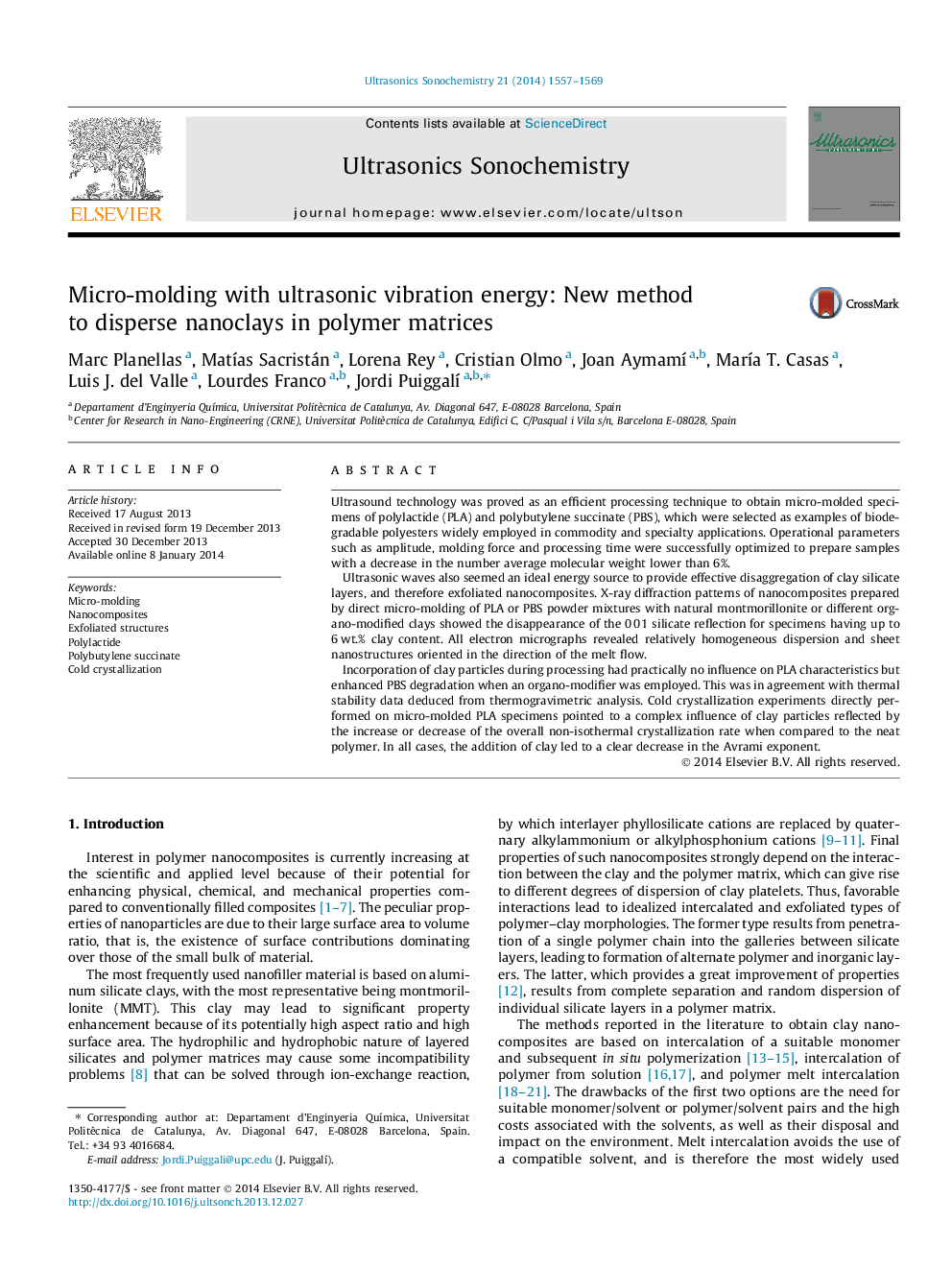| کد مقاله | کد نشریه | سال انتشار | مقاله انگلیسی | نسخه تمام متن |
|---|---|---|---|---|
| 1268992 | 972435 | 2014 | 13 صفحه PDF | دانلود رایگان |
• Ultrasonic micro-molding is effective in preparing nanocomposites from natural and organo-modified montmorillonites.
• Ultrasonic energy renders exfoliated structures with high orientation of clay nanosheets in the direction of polymer flow.
• Polylactide can be micro-molded without any significant degradation when organo-modified montmorillonites are used.
• Polybutylene succinate shows remarkable degradation during ultrasonic micro-molding upon use of organo-modified clays.
Ultrasound technology was proved as an efficient processing technique to obtain micro-molded specimens of polylactide (PLA) and polybutylene succinate (PBS), which were selected as examples of biodegradable polyesters widely employed in commodity and specialty applications. Operational parameters such as amplitude, molding force and processing time were successfully optimized to prepare samples with a decrease in the number average molecular weight lower than 6%.Ultrasonic waves also seemed an ideal energy source to provide effective disaggregation of clay silicate layers, and therefore exfoliated nanocomposites. X-ray diffraction patterns of nanocomposites prepared by direct micro-molding of PLA or PBS powder mixtures with natural montmorillonite or different organo-modified clays showed the disappearance of the 0 0 1 silicate reflection for specimens having up to 6 wt.% clay content. All electron micrographs revealed relatively homogeneous dispersion and sheet nanostructures oriented in the direction of the melt flow.Incorporation of clay particles during processing had practically no influence on PLA characteristics but enhanced PBS degradation when an organo-modifier was employed. This was in agreement with thermal stability data deduced from thermogravimetric analysis. Cold crystallization experiments directly performed on micro-molded PLA specimens pointed to a complex influence of clay particles reflected by the increase or decrease of the overall non-isothermal crystallization rate when compared to the neat polymer. In all cases, the addition of clay led to a clear decrease in the Avrami exponent.
Journal: Ultrasonics Sonochemistry - Volume 21, Issue 4, July 2014, Pages 1557–1569
